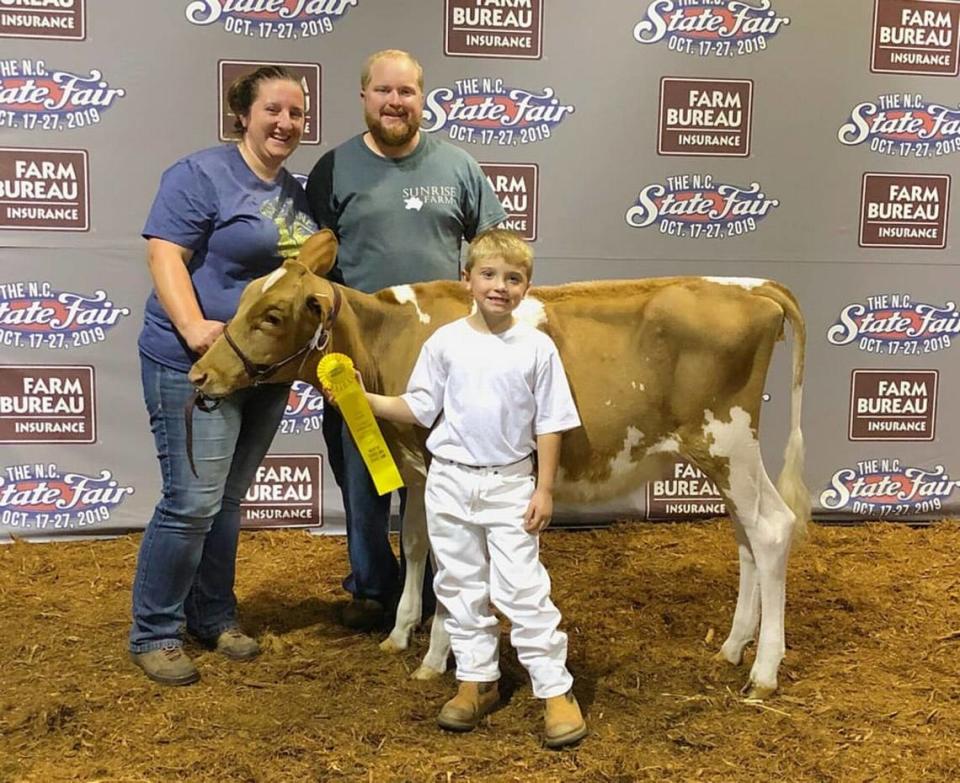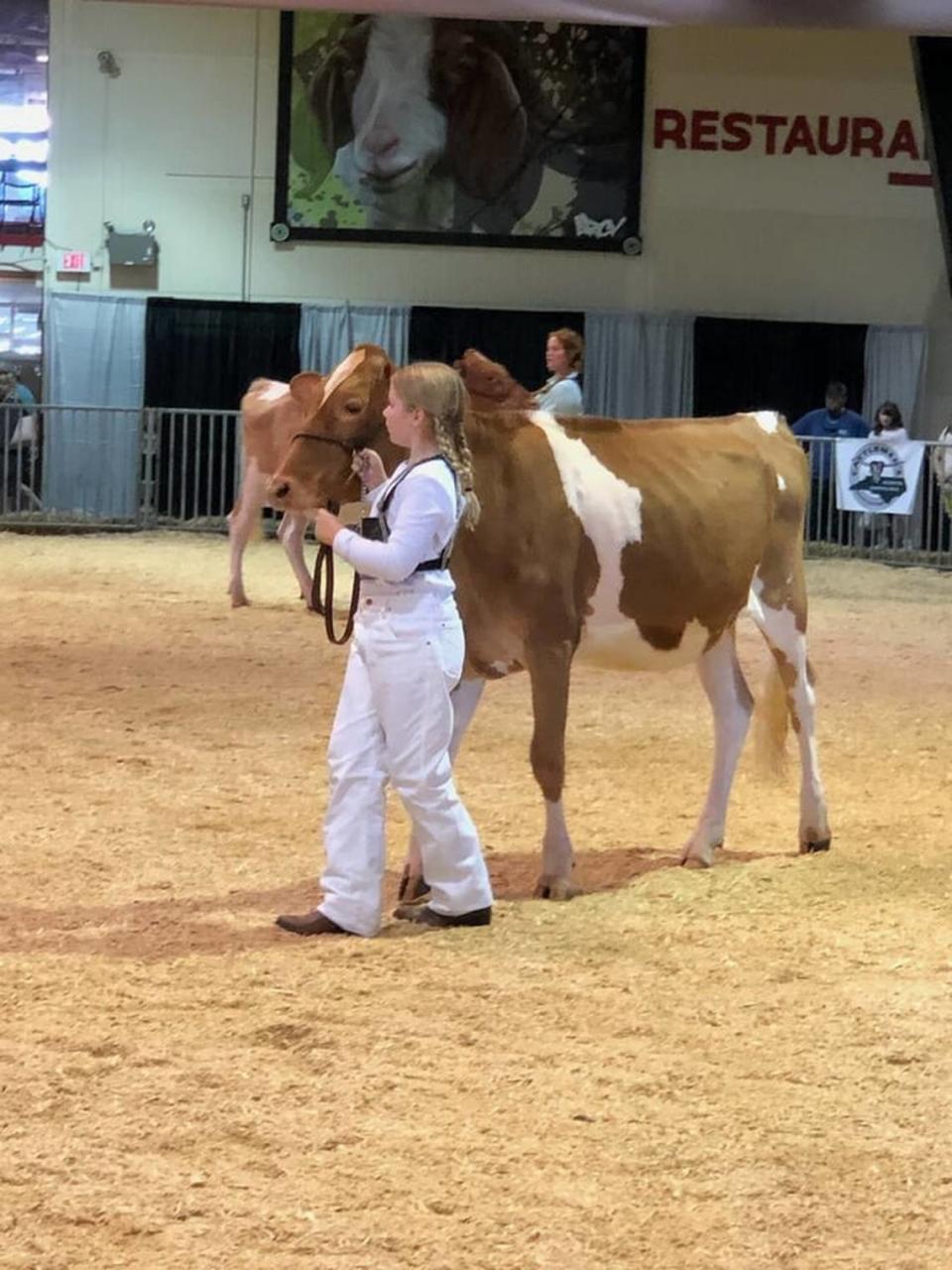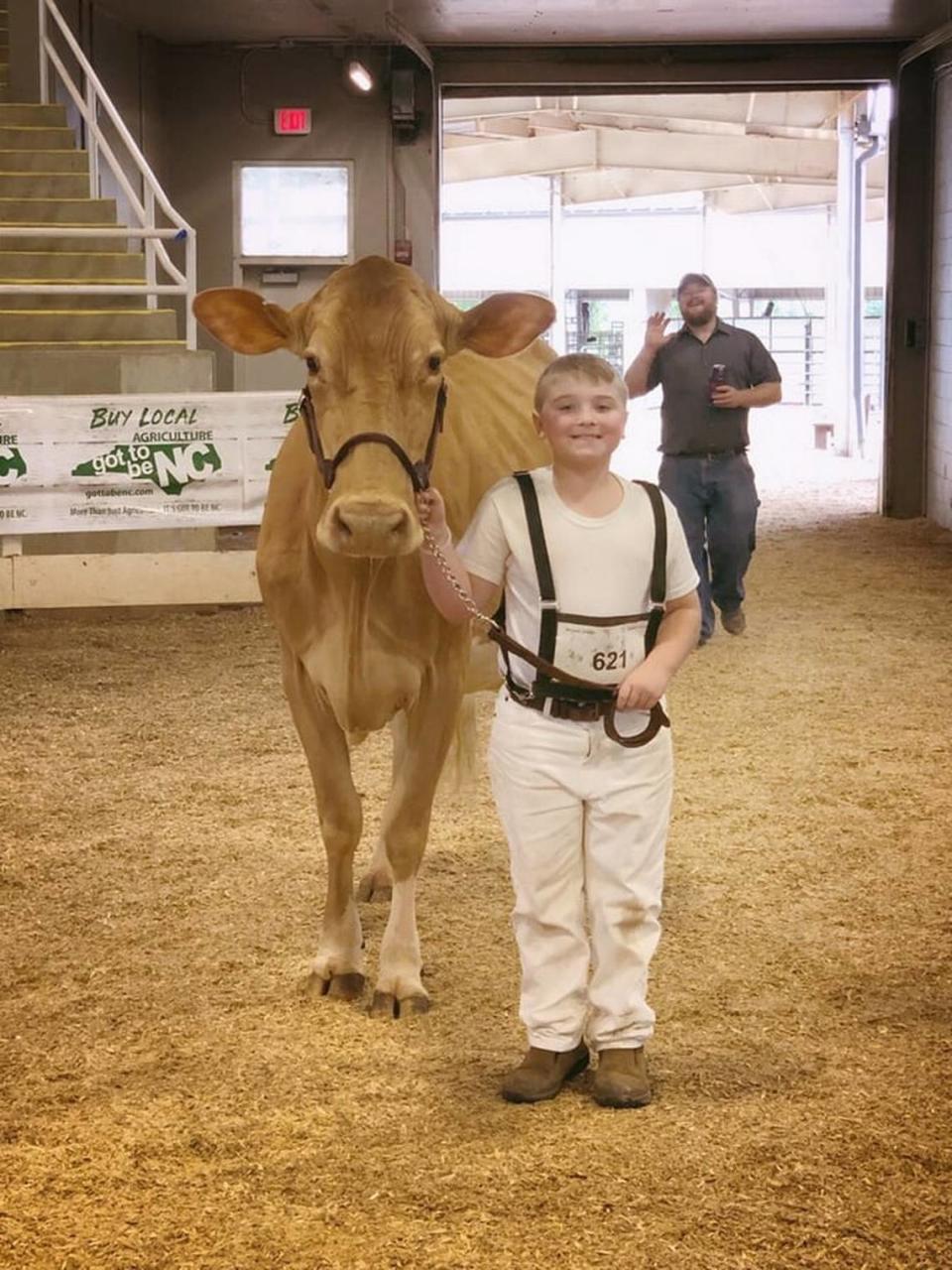‘We just can’t afford it.’ NC State Fair livestock entry fees are up, forcing some out
For Ashley McMurry, going to the North Carolina State Fair is better than Christmas morning.
Each October, she and her family load up 10 to 12 of their dairy cows and make the roughly 200-mile drive from their small farm in Cleveland County, west of Charlotte, to the State Fairgrounds in Raleigh, where they show the animals in the fair’s annual livestock show competitions.
It’s a tradition that has spanned more than 50 years and four generations of McMurry’s family, she said, beginning with her grandfather and now continuing through her own children.
This year, McMurry and her family will scale back the number of cows they’ll bring to the fair, as well as the number of shows they’ll enter, because of sharp increases in livestock show fees.
The per-head, or per-animal, entry fees for the livestock shows have increased significantly — or, in some cases, have been charged for the first time — over the past few years, according to rates listed in the State Fair’s annual livestock premium books, which contain fees and other entry information for the competitions.
In many cases, the fees have risen to the point that some exhibitors, such as McMurry, are feeling priced out of some of the events and wondering whether the fair is committed to its agricultural roots.
“A fair is supposed to be surrounded by the thing that it was started by, and that was farmers coming together, exhibiting their animals. That came first,” McMurry, 36, told The News & Observer in an interview.
“The food, the rides, the entertainment that came next. And I feel like the State Fair, unfortunately, has become very distant from shining the light on really what the fair is really all about.”
Fair introduced junior division fees in 2021
McMurry said she first learned of the increased entry fees for the 2022 livestock shows when she received the annual premium book for this year’s fair. A letter from state Agriculture Commissioner Steve Troxler in the front of the book is dated July 25.

As she looked through the premium book, McMurry started to do the math: Based on how many cows her family usually brings to the fair, and how many family members generally enter the junior division and open division shows, she estimated they would have paid more than $700 in entry fees with the new prices — far more than they had ever paid before.
“My jaw was just, obviously, wide open,” she said.
There are two divisions of livestock shows at the State Fair:
The junior division, which is open only to North Carolina residents between the ages of 6 to 18 who “must be able to show the animal on their own.”
The open division, which is “open to the world” and does not have age or residency requirements.
McMurry and her family have generally shown their cows in both divisions.
As recently as 2020 — when the fair was canceled for the first time since World War II, but still offered some livestock shows for junior competitors — the junior division shows, which include shows for several species each year, from cattle to pigs to lambs and more, did not charge an entry fee for exhibitors.
That changed for the first time last year, at the 2021 State Fair, when exhibitors entering junior division livestock shows were charged between $10 to $20 per animal, depending on the species of animal being shown.
Those entry fees will remain in place, and largely remain at the same pricing, for the 2022 State Fair, according to entry information posted online at the State Fair’s website.
“I’m very upset that they’re going to charge juniors to exhibit,” McMurry said.
In an email to The N&O, Heather Overton, assistant director of public affairs for the N.C. Department of Agriculture & Consumer Services, said the junior division entry fees were implemented last year to “aid in a more accurate entry count for better planning and purchasing by show management” and are not meant “to deter participation or financially burden competitors.”
But McMurry said she’s worried that continuing to require entry fees for the junior division will discourage participation — which could have lasting impacts on the livestock shows, the fair and the agriculture industry in North Carolina.
“I want the fair to know that the fair is more than just exhibiting animals for the majority of us,” McMurry said.
“It’s tradition. It’s that thing we look forward to every year, and it’s also the future of the dairy industry. If we can keep our children involved, and if they can become friends with other dairy kids and they stay involved with things on the farm, I think they’re more likely to possibly stay on the farm and want to continue and be the next generation on that farm.”

Open division fees are eight to 10 times higher in some cases
Open division livestock shows did have entry fees prior to last year, but they were considerably less expensive than the fees being charged now. (Open division livestock shows were not held at the 2020 State Fair.)
According to information provided to The N&O by the State Fair, in 2019 — the last time open division shows were held before some returned last year — entry fees for the open division ranged from $2 to $5 per animal, depending on the species. One open division category, the feeder calves category, charged $7 to enter a pen of three animals.
In 2021, the open division entry fees skyrocketed to $25 to $50 per animal, depending on the category. Only limited open division shows were offered: breeding gilt, beef cattle and meat goat.
Open division shows for other species, including dairy cattle, which McMurry shows, were not offered at the 2021 fair, but many are returning this year — again, with significantly increased entry fees compared to the last time the shows were offered, in 2019.
That means the sticker shock for entering those categories this year is brand new for competitors who didn’t compete last year.
“If a species was not shown last year, there will be an increase over 2019,” Overton told The N&O in an email.
In the dairy cattle open division show for the 2022 fair, it will cost $40 to enter one animal. That’s eight times higher than the $5 the fair charged when show was last held in 2019, as well as for more than 30 years prior to that, Overton told The N&O.
The entry fees for the open division shows offered last year will be reduced this year, as the increased species offerings this year will provide “balance across the entry fees for large and small species in all the classes,” Overton said.
That means, with more shows being offered and more participants able to enter this year, the entry fees were able to be dispersed and spread over more categories, lowering some costs from last year.
Overall, though, the fees are still much higher than they were in 2019.
Overton also said that the decreased entry fees for some categories this year came after “listening to our supporters and exhibitors.”
Given the increased fees for the open division dairy cattle show this year, McMurry and her family have decided to only enter their cows in the junior division this year, which will still allow their kids to participate.
“It’s not that we don’t want to show in the open show,” she said. “We just can’t afford it.”
What the entry fees are used for
Entry fees help cover “waste management, bedding, staffing for show set up, cleaning and turnover between shows, judges, premiums, ribbons and other expenses,” as well as admission to the fair and on-site parking for show participants, Overton said.
“In all cases, expenses have risen each year since 2019,” Overton said.
The State Fair “does not receive an annual appropriation from the General Assembly,” Overton said, and the fair accounts “must be self-supporting.”
As noted by Overton, entry fees also partly support “premiums,” or monetary winnings participants can receive for placing in the shows.
Overton told The N&O that the premium amounts being offered in the junior divisions this year will “more than recoup the entry fee paid for the animal they are showing, regardless of where they place in the show.”
In the open shows, “placing in the top five in a class will also result in premiums that cover at least the cost of entry,” Overton said.
New premiums cover entry, but may not cover additional expenses
But a look at the numbers shows that, in many cases, participants will likely walk away with less money from premiums than in previous years.
During previous years of livestock shows, when entry fees were less — or not charged at all, in the case of the junior division — the potential net payout from the premiums was higher, since participants were paying less money to enter.
For example, in 2019, when the per-head entry fee for the open dairy cattle show was just $5, the first place premiums ranged from $75 to $375, depending on the exact show and how many animals were shown, according to that year’s premium book. The lowest premiums, offered to 20th place finishers, ranged from $30 to $105, which still allowed competitors to net more money than they had paid to enter.
This year, when the entry fee for the open show is $40, the first place premium is $60, resulting in net winnings of $20. The lowest premium, offered to fifth place finishers, is $40 — exactly enough to cover the entry fee and no other expenses.
The lower premiums coupled with the higher entry fees, specifically in the open divisions, were a major reason behind McMurry’s decision to not enter those shows this year.
Previously, lower entry fees and potentially higher payouts from premiums meant that participants could walk away with extra money beyond just recouping the entry fee, which helped cover additional expenses exhibitors paid to participate in the shows, such as travel costs and gas, McMurry said.
Now, with lower net payouts, McMurry feels those costs wouldn’t be covered, making it especially harder for small-scale farmers like herself to justify entering the show.
“It has never been about money, and I don’t ever want it to ever seem like it’s about money,” McMurry said. “Because all you’re trying to do — and everybody in the barn would agree to this — is you want your expenses covered.”
Junior division competitors are likely to fare better when it comes to premiums.
With a lower entry fee in the junior divisions, the potential net premium payouts are higher than those in the open divisions. For example, the junior dairy cattle shows, which have a $20 per-head entry fee this year, have a maximum premium of $100 for first place, and a $50 premium for 15th place. Those premiums will give junior participants at least $30, and potentially as much as $80, in net winnings — enough to cover both the entry fee and additional expenses, unlike some open division premiums.

Could fees be reduced in the future?
McMurry wrote about her frustrations with the increased fees in a Facebook post last week, saying the State Fair had broken her heart.
The post has been shared more than 1,200 times as of Wednesday afternoon, and it has more than 180 comments, many of them agreeing with McMurry’s sentiments. Some commenters have said they’ve also made the decision to scale back their participation in the fair for similar reasons.
As far as whether entry fees could be reduced for the 2023 livestock shows or in future years, Overton said the fair’s livestock team each year “takes into consideration all feedback and personal evaluation” of the show, its structure and schedule flow to plan for future years.
Fees are determined by the State Fair Livestock Show Office “after consideration of projected available funding for operating expenses, premiums, as well as entry counts,” Overton said.
For now, McMurry and her family will continue to participate in the fair’s junior livestock activities because they feel it’s an important experience for their children to have, but “we just won’t participate in the open show anymore,” she said.
They’re looking forward to this year’s shows, coming up in a couple months, but hope the fees, both for the junior and open divisions, will be reduced in the future.
“When we leave the State Fair on that Sunday evening, we’re already looking forward to next year and what we can do different,” McMurry said, “and we know we’re going to be there.”

 Yahoo Movies
Yahoo Movies 
